How to build a killer desktop audio system
3 ways to create a high-quality stereo music system at your desk
In this article: I'll show you three ways to get great sound at your desk.
- Simple yet effective: Powered computer speakers
- For the best sound quality: A compact external amp and passive speakers
- When you can't listen out loud: Headphones
I
work remotely most of the time, which means a good portion of my day is spent in my home office, writing copy or editing photos. As much as I enjoy both activities, parking myself at my desk for long stretches of time requires a great deal of focus.
Sure, I could drink more coffee to stay clear-minded (and often do!). But more than anything, my attention-sharpening elixir of choice is music. Letting my imagination intertwine with what I'm hearing allows me to express myself far more vividly than if I'm working in a quiet room. It's a completely different creative experience.
This article was born out of my desire to help you get the most out of your desk time. Let's look at three ways you can enjoy great sound while you work. Have questions as you're reading? Leave me a comment below, or give one of our friendly advisors a shout.

Listening to music allows me to focus my creative energy while working.
1. Powered computer speakers are simple and effective
Over the years I've bought tons of different computer speakers. One of my favorites is the Audioengine A5+ bookshelf speakers. These powered speakers offer huge sound with tight, punchy bass and exceptionally clear highs. I love them for a home office where you can crank 'em up without bothering anyone around you.
To get the best sound out of your speakers, space them apart so that they form an equal-sided triangle with you. Then, angle them inward so that they fire directly toward you. This creates a tightly focused audio "sweet spot" that makes music — especially live performances — sound incredible.
If you go with the A5+s, I highly recommend buying the matching desktop stands, which decouple the speakers from your desk to reduce vibrations. They also angle the speakers upward, directing high frequencies toward your ears for a better listening experience.

If you have the space, the Audioengine A5+s are a terrific choice for a desktop audio system. Pick up the matching stands to angle the tweeters up toward your ears.
2. Use an external amplifier with traditional speakers
It's a wonderful time for the world of desktop audio, thanks to compact amplifiers that sound sweet but don't require gobs of real estate.
Take this really cool vertical amp from NAD, for example. The D 3020 V2 lets you drive a pair of bookshelf or in-wall speakers, which frees up space for that awesome laser clock you keep on your desk. You can even stream music from your phone or computer through Bluetooth®.
Another great option is the compact Denon CEOL RCD-N12. This all-in-one unit can power speakers, play CDs, stream music through Apple® AirPlay® 2 or Bluetooth, and even has an AM/FM tuner.
I recommend choosing an amp that has a subwoofer output, in case you want to expand your system with deeper bass down the road. If you want a hand matching up speakers and an amp, give us a shout!

The compact, vertically oriented NAD D 3020 V2 is packed with features, but is only a fraction of the size of a traditional amplifier.
Improve the sound of any computer speaker system
No matter which type of system you choose, an easy way to improve your playback quality is to use an external DAC (digital-to-analog converter). This bypasses your computer's soundcard for improved audio processing and reduced noise.
My favorite by a country mile is the AudioQuest Dragonfly. It's the size of a pack of gum, and is super easy to connect and use. It also doubles as a pretty sweet headphone amplifier that you can use with your phone.

The Audioquest Dragonfly plugs into an open USB port, and bypasses your computer's sound card for improved audio fidelity.
3. Can't listen loud? Rock headphones instead
I'm currently at my desk at Crutchfield's headquarters. And since I can't jam out here the way I do at home, I'm rocking my Bose QuietComfort® 35 noise-cancelling headphones.
I'd be lost without these things. Not only do they block out any semblance of noise, but they let me stay laser-focused while I'm working. So if traditional speakers aren't suitable for your work environment, I highly recommend buying a good pair of on-ear or over-the-ear headphones.
If you work in a noisy environment, consider a pair that has noise cancelation. My friend Jeff's headphones buying guide offers a comprehensive look at choosing the right pair for you.
Get the most out of your wired headphones
One big benefit to traditional wired 'phones is the ability to drive them with a headphone amplifier to get the best performance. Thanks to a much larger power supply, you'll enjoy better bass, a wider dynamic range, and tighter control versus plugging directly into your phone or laptop.
Just like with stereo amps, headphone amplifiers range from compact units to huge, high-current models that drive even the most power-thirsty headphones with ease. Many also have an onboard DAC for the best possible playback quality.

Headphone amplifiers, like the iFi Neo iDSD shown here, offer super-clean, high-quality power for wired headphones.
Need help choosing?
We have a team of experts who would love to help you find the right pair of headphones or speakers for your desktop system. Give one of them a shout today!
Free lifetime tech support is included with your Crutchfield purchase.
Comments (3)
Please share your thoughts below.






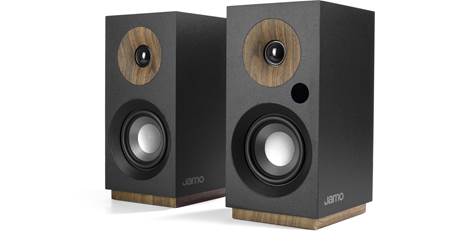
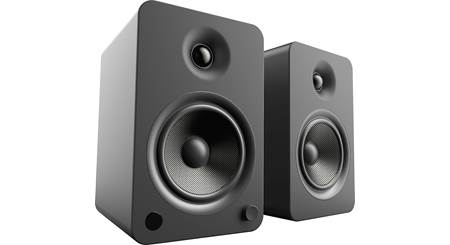
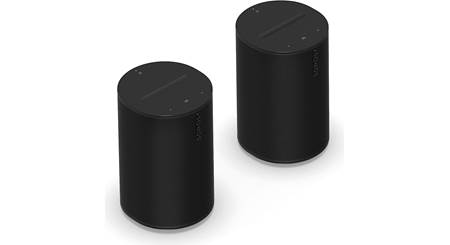
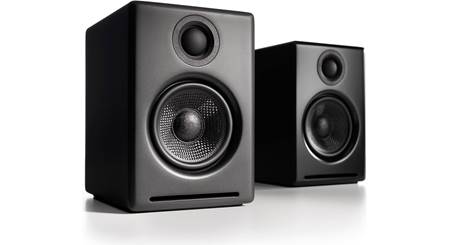


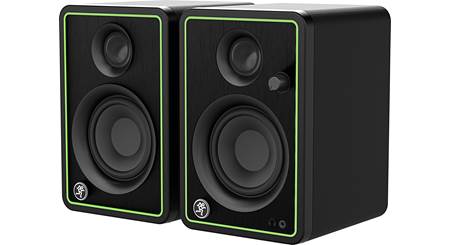
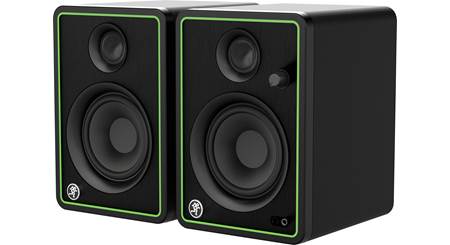
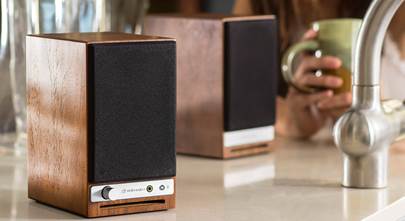
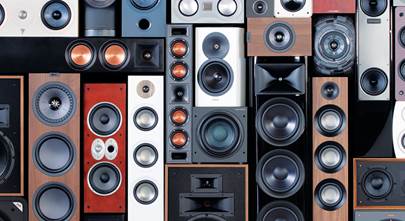
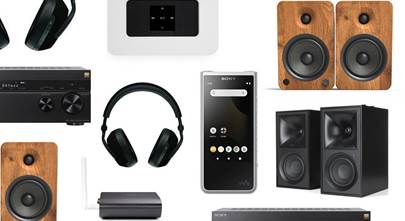

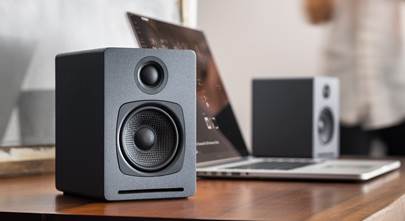

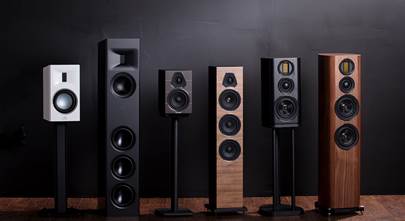



Mike Avery from Butte
Posted on 2/2/2022
I have my computer hooked up to my older Klipsch SB1 speakers powered by an equally old JVC RX-318 receiver, with a Definitive ProSub 800. I want to transition over to high definition audio. My motherboard is an ASUS Pro wrx80e-Sage Se, which has a 120db signal to noise ratio for playback, and 32bit 384KHz capability. Do I need an external DAC? Is my receiver (which I know isn't high end) decent enough, and are my speakers adequate to get the additional nuance from high definition audio? Eventually, I want to upgrade my receiver to a Cambridge Audio AXR100 and my speakers to something like the Klipsch Reference Premiere RP-500Ms. My desk is rather small, so anything larger is out of the question. I used an M-Audio Delta 192 in my previous, 2006 era system, and I loved the sound in games and from other sources with greater-than-cd fidelity, but M-Audio no longer makes PC sound cards. So far, I am impressed by the built-in sound of my current system. Am I imagining that it's better than it really is? Thanks!
Kramer Crane from Crutchfield
on 2/4/2022
"Either of those would work like a charm and would be better than the onboard DAC he has. But, that's only true if he just wants it for stereo listening. If he's wanting surround sound processing, it's best he sticks with his onboard sound chip."
I hope that helps. Please let us know if you have any questions, and happy listening!
Russell Johnson from Berkeley, CA
Posted on 11/23/2021
I have an Edifier S360DB bookshelf speaker system. The sub-woofer sounds somewhat flat, low, and dull. And, the smaller speakers (2) need better highs, lows, and in-betweens. I am using this speaker system with my desktop computer via its sound-port. Do you have any reasonable suggestions that could help me enhance the sound, etc.?
Kramer Crane from Crutchfield
on 11/24/2021
The first is to add a digital-to-analog converter (DAC) to your system, which will improve the quality of the signal being fed to your speakers. Something like the AudioQuest DragonFly is a solid, budget-friendly choice that plugs into a USB port and bypasses your computer's sound card for improved fidelity and reduced noise.
The second is to use a high-quality, uncompressed music source. I have found Qobuz and Tidal to be excellent on this front, but there are plenty of other online music services that are worth exploring as well (YouTube Music is my current favorite).
Byron Gray from Hamilton
Posted on 8/1/2021
Hi, with the NAD Amp, I presume you don't need an external DAC as it comes with one built in? What would you then recommend to take the source from the computer into the NAD amplifier? Next, would using a speaker like a Dali Oberon 1 be over the top in terms of output. I would think about pairing this with a small Dali woofer. Appreciate the advise.
Kramer Crane from Crutchfield
on 8/6/2021
As for the Oberon 1s, personally I'd want a little more power than what the 3020 V2 offers (30 watts per channels). These speakers are relatively inefficient, so they need a decent amount of juice to sound their best. Something like the Denon PMA-600NE is better suited in that department, though it does have a larger footprint, so you'll want to factor that in.